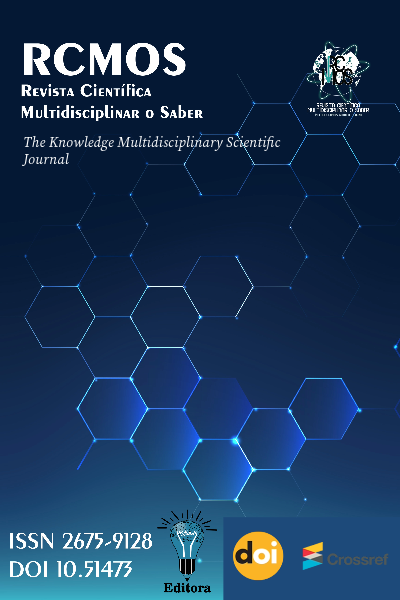Mapping and Mitigation of Risks in Global Logistics Chains, Focusing on Bottlenecks such as Port Congestion and Container Underutilization
Mapping and Mitigation of Risks in Global Logistics Chains, Focusing on Bottlenecks such as Port Congestion and Container Underutilization
DOI:
https://doi.org/10.51473/rcmos.v1i2.2024.1419Keywords:
global logistics; port congestion; container; resilience; operational risk; intermodal.Abstract
This article analyzes risk mapping and mitigation in global logistics chains, with an emphasis on recurring bottlenecks such as port congestion, container imbalance and underutilization, low schedule reliability, and intermodal constraints that amplify the cascade effect in the hinterland. Drawing on the literature on operations management, transport economics, and network resilience (UNCTAD, 2020; NOTTEBOOM; RODRIGUE, 2021; SHEFFI, 2015; CHOPRA; MEINDL, 2016; IVANOV; DOLGUI, 2020), we propose an integrated framework that includes: (i) a taxonomy of risks in ports and corridors; (ii) metrics for diagnosis and prioritization (turnaround, dwell time, schedule reliability, container availability, TTS/TTR); (iii) fault propagation models in the maritime-land network; and (iv) mitigation strategies across different time horizons—short, medium, and long term (operational windows, gateway diversification, equipment pools, data sharing, and contracts with contingency SLAs). It is argued that the combination of network modularity, interorganizational visibility, and contractual optionality helps reduce the area of the "resilience triangle" and improve service predictability even under severe shocks.
Downloads
References
CHOPRA, S.; MEINDL, P. Supply Chain Management: Strategy, Planning, and Operation. 6. ed. Boston: Pearson, 2016.
CHRISTOPHER, M. Logistics & Supply Chain Management. 5. ed. Harlow: Pearson, 2016.
CLARKSONS RESEARCH. Container Intelligence Quarterly. London: Clarksons Research, 2021.
DREWRY. Container Forecaster. London: Drewry Maritime Research, 2021.
HARALAMBIDES, H. E. Gigantism in container shipping, ports and global logistics: a time-lapse into the future. Maritime Economics & Logistics, v. 21, p. 1–60, 2019. DOI: https://doi.org/10.1057/s41278-018-00116-0
HUMMELS, D. Time as a Trade Barrier. NBER Working Paper, 2001. DOI: https://doi.org/10.21642/GTAP.WP18
IAPH – INTERNATIONAL ASSOCIATION OF PORTS AND HARBORS. COVID-19 Port Economic Impact Barometer. Antwerp: IAPH, 2020.
ISO. ISO 22301:2019 — Security and Resilience — Business Continuity Management Systems — Requirements. Genebra: ISO, 2019.
IVANOV, D.; DOLGUI, A. Viability of intertwined supply networks: extending the supply chain resilience angles. International Journal of Production Research, v. 58, n. 10, p. 2904–2915, 2020. DOI: https://doi.org/10.1080/00207543.2020.1750727
NOTTEBOOM, T.; PALLIS, A. Port Economics, Management and Policy: COVID-19 and the impact on ports. Relatório/briefs, 2020. DOI: https://doi.org/10.4324/9780429318184
NOTTEBOOM, T.; RODRIGUE, J.-P. Port economics, management and policy: port congestion and supply chain (in)stability in 2020/2021. Maritime Economics & Logistics, 2021. DOI: https://doi.org/10.4324/9780429318184
OECD/ITF – INTERNATIONAL TRANSPORT FORUM. Policies to Enhance Intermodal Connectivity and Performance. Paris: OECD Publishing, 2016.
PONOMAROV, S. Y.; HOLCOMB, M. C. Understanding the concept of supply chain resilience. The International Journal of Logistics Management, v. 20, n. 1, p. 124–143, 2009. DOI: https://doi.org/10.1108/09574090910954873
RODRIGUE, J.-P. The Geography of Transport Systems. 4. ed. New York: Routledge, 2020. DOI: https://doi.org/10.4324/9780429346323
SEA-INTELLIGENCE MARITIME ANALYSIS. Global Liner Performance (GLP) Report. Copenhagen: Sea-Intelligence, 2021.
SHEFFI, Y. The Power of Resilience: How the Best Companies Manage the Unexpected. Cambridge, MA: MIT Press, 2015. DOI: https://doi.org/10.7551/mitpress/9780262029797.001.0001
SIMCHI-LEVI, D.; KAMINSKY, P.; SIMCHI-LEVI, E. Designing and Managing the Supply Chain: Concepts, Strategies and Case Studies. 3. ed. Boston: McGraw-Hill/Irwin, 2008.
UNCTAD – UNITED NATIONS CONFERENCE ON TRADE AND DEVELOPMENT. Review of Maritime Transport 2020. Geneva: UNCTAD, 2020.
WORLD BANK; IHS MARKIT. Container Port Performance Index 2020. Washington, DC: World Bank, 2020.
Downloads
Additional Files
Published
Issue
Section
Categories
License
Copyright (c) 2024 Ivan de Matos (Autor)

This work is licensed under a Creative Commons Attribution 4.0 International License.












